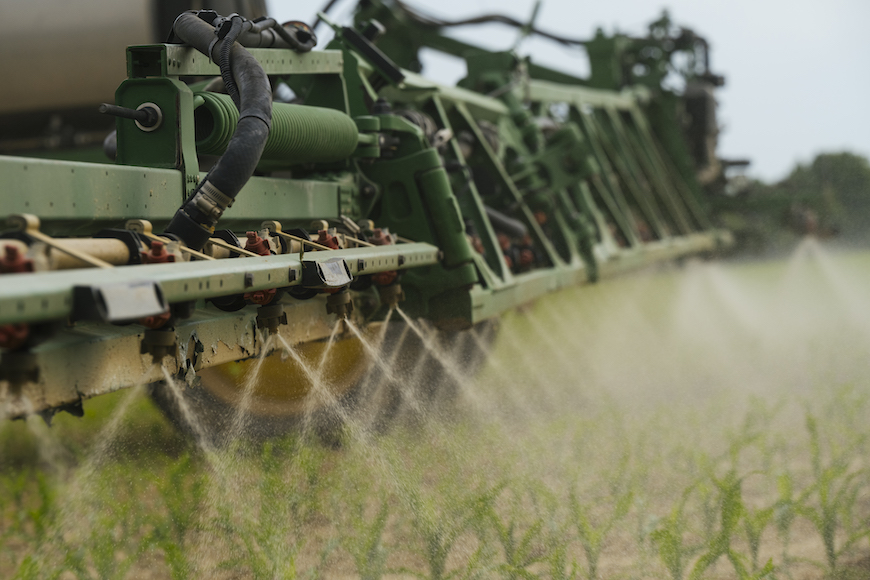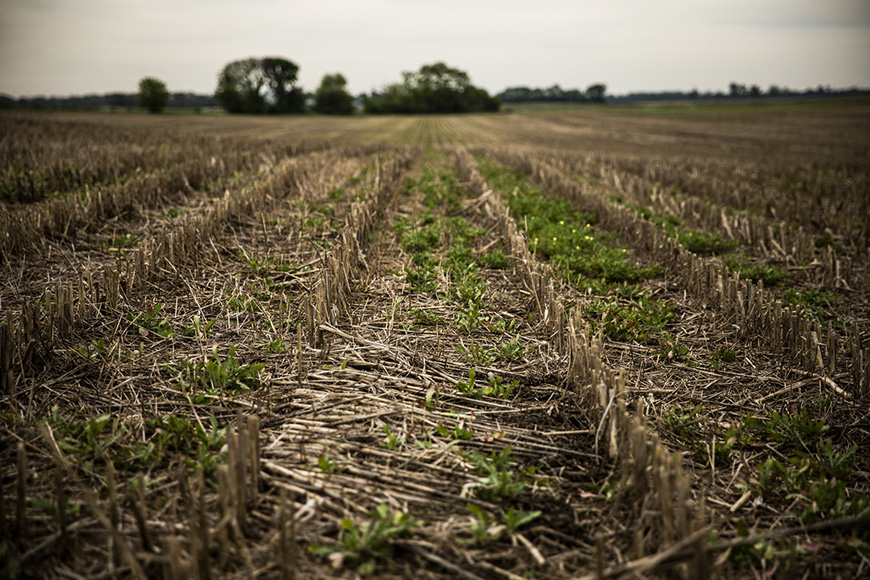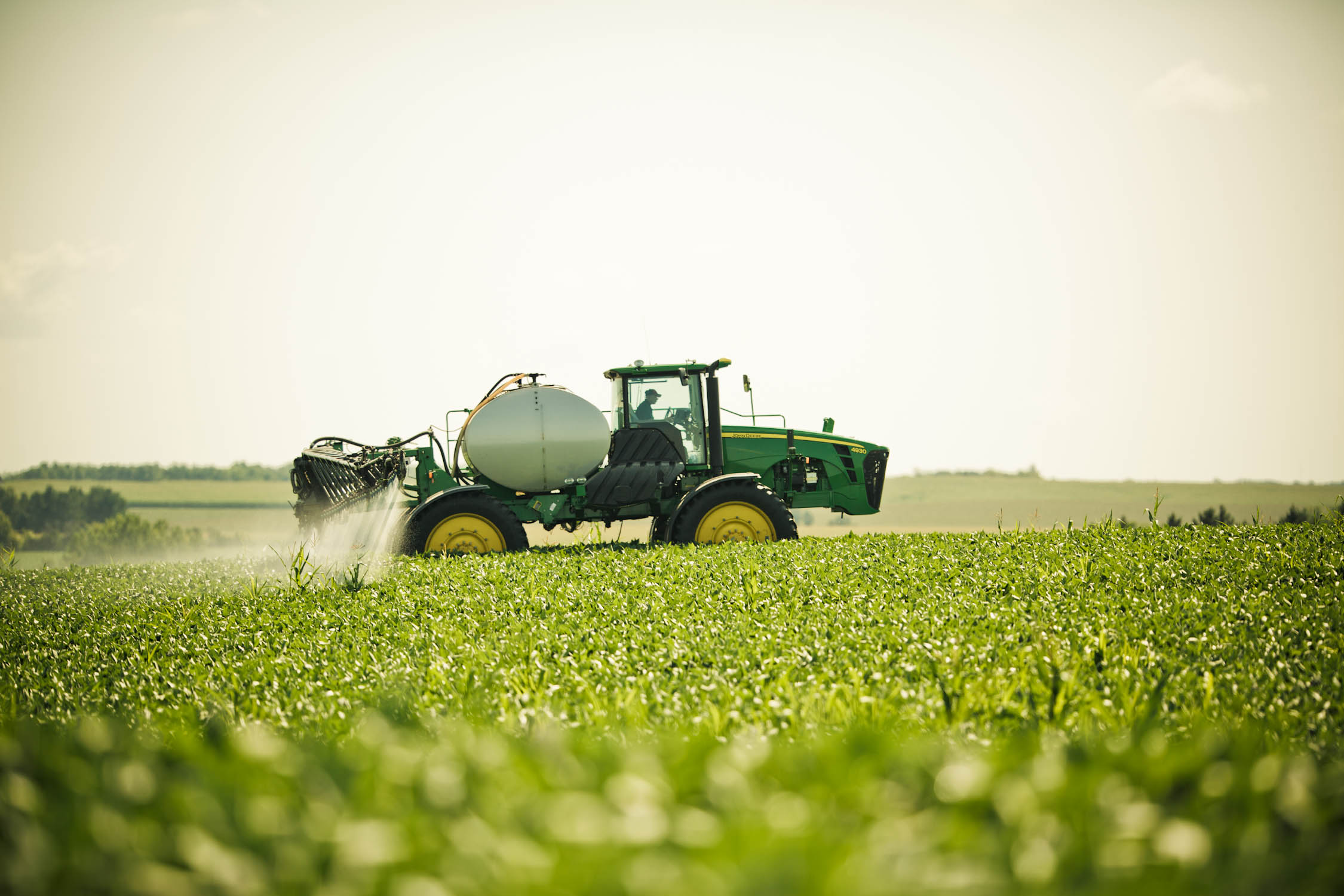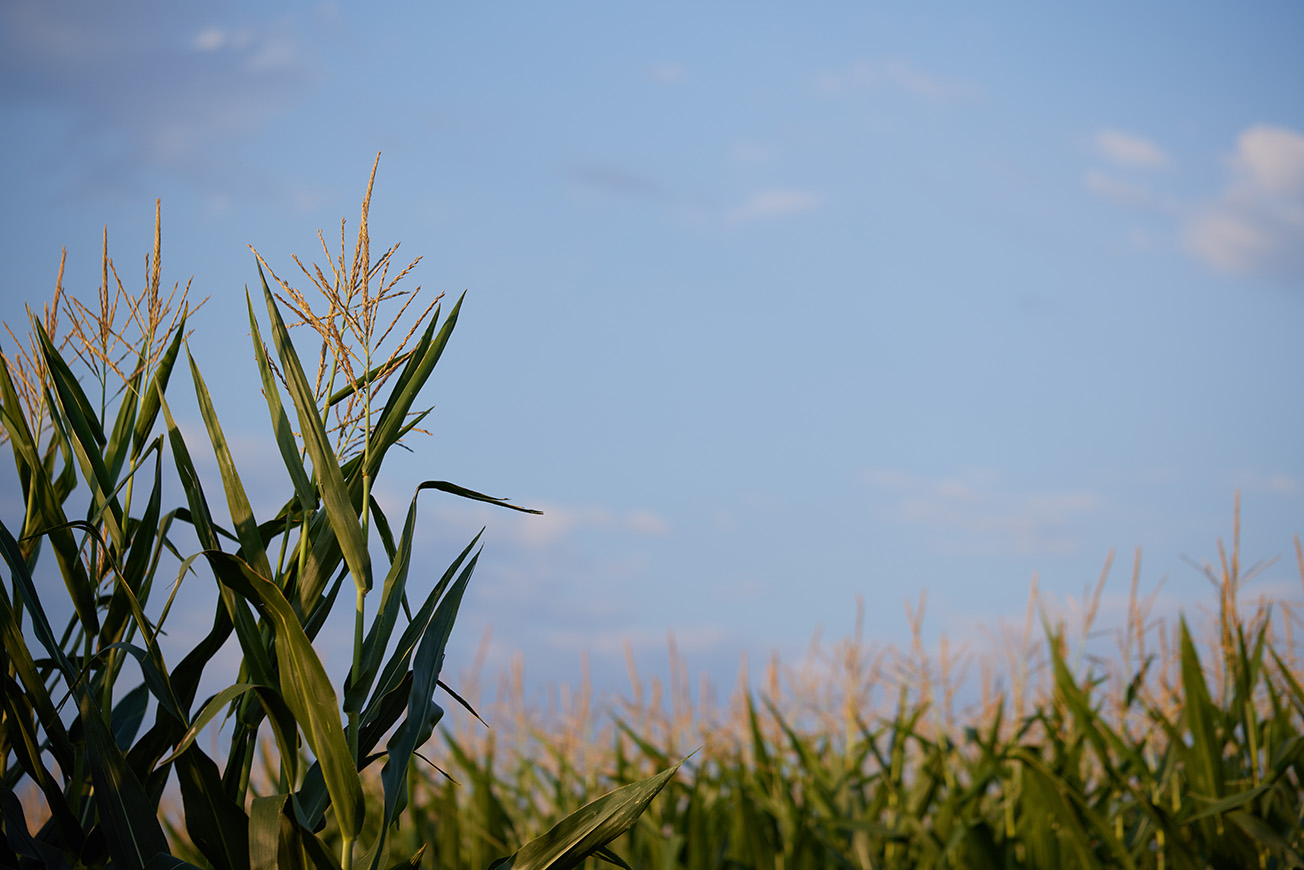How to Build Your Biologicals Game Plan for 2026

While initially biologicals were used primarily in specialty crop markets, these products have become increasingly popular for row crops in my area of Central East Minnesota and with row crop growers across all geographies. Some soybean and corn growers have set their sights on biologicals to accelerate growth and gain an edge; others have seen biologicals’ value in maximizing the potential ROI of their plant nutrition investment. And as restrictions on conventional products get tighter, biologicals only become more and more useful to growers in future years.
With the season quickly coming to a close, it’s time to start formulating a game plan for 2026. During harvest, you’re analyzing fields, reflecting on what went well and what tweaks you will make for the year ahead. While all that information is fresh in your mind, it’s a good time to consider if the benefits of biologicals could help you achieve success in 2026.
Whether you’re a newcomer to the biological market or are an experienced biological user looking to improve your plan for next year, these guidelines can help you decide if, what, where and how you should integrate biologicals into your overall crop management system. Just like introducing any new product into your rotation, you should take deliberate steps to make sure you’re choosing the right biological for the right acres.
What agronomic issues are you attempting to solve? If you’re looking to mitigate the threat of a certain disease, pairing a biological with a typical fungicide at different plant growth stages may be a good course of action. For example, in my region, white mold in soybeans is a common challenge for growers. We have seen success in using Heads Up®, a biological seed treatment, to help defend from white mold at the start in addition to fighting it in the typical window at flowering.
Overall, we see biologicals often fit best in highly managed acres with minimal limitations. Because most biological products work by playing off the plants’ naturally occurring activities, a healthy foundation results in greater effectiveness. Even if a product has great data backing it and is consistent, if you try to enhance plant processes without a strong agronomic base, you probably won’t get the results you’re after.
1. Seed treatment: Usually blended with standard seed treatments, some biological seed treatments are applied directly to the seed while others can be mixed with seed in the planter box. Planter box treatments, including Dash PBS and Dash PBC, are a popular choice in my area to protect early-season seeds in cool, wet soils. This is a particularly efficient way to apply a biological, as there are no additional time, fuel or labor requirements.
2. Soil-applied: Just as they sound, these products are applied to soil using standard spray equipment or irrigation systems and typically don’t require extra equipment. Spraying near the root zone helps these biologicals break down crop residue and increase nutrient availability.
3. In-furrow: Placing a biological product in the furrow at planting has benefits including healthy root growth, faster and more consistent emergence and improved water and nutrient uptake. When paired with a starter fertilizer, in-furrow biologicals have been shown to increase yields significantly.1 Ascend2® PGR is a great in-furrow option for corn that’s backed by plenty of data and has proven consistent in our geography.
4. Foliar: Foliar-applied biologicals are sprayed directly on the crop canopy, bypassing limitations that, say, soil may present by going straight to plant leaves. These work well with foliar-applied nutrients to boost uptake and amplify the impacts of both products.
No matter which application suits your needs best, keeping the pros and cons of each in mind while developing your plan can guide you to choosing the best biological for your operation.
As a retailer, I find the BioVerified list to be a helpful resource for growers to hone in their focus on products that could really work in their fields. Two of the criteria I suggest looking at most are consistency and location. WinField United tests for both — their data stretches over many years in a wide variety of environments, so you can feel confident that you have the knowledge you need to make an informed decision.
If I had to recommend one product to consider for your 2026 plan, I would suggest Ascend2 PGR for corn and Ascend ST3™ PGR for soybean growers. In Northern Minnesota, growers face cold and wet springs every year, but Ascend2 PGR and Ascend ST3 PGR both help mitigate the risk of these early-season stressors for plants and protect growers’ seed investments. Data from Answer Plot trials shows that Ascend2 PGR had a positive average yield impact of 7.5 bu/A in corn in majority of locations tested, with an overall average yield response of 3 bu/A.3
While the yield monitor can reflect gains from biologicals, watch for yield consistency over increases. This consistency will likely prove more visible (and valuable) in stress years where it’s been too hot, too dry or too wet.
Observe qualitative properties in addition to quantitative. Factors like crop quality, tolerance to stress, water use efficiency and healthy root development may be just as important as a jump in yield numbers.
Profit returns can also help you identify if your biological plan is working. Comparing ROI for fields where you’ve applied biologicals is a good way to measure the numerical output of your efforts instead of bumps in yields.
Now is the perfect time to get started thinking about biologicals for 2026. As you harvest your fields this fall, spotting areas that thrived and those with room for improvement, consider how a biological product could fit into your plan for next season.
Curious how biologicals can work for you in 2026? Take the next step by contacting your local WinField United retailer. You can depend on them for local insights, product data, biologicals recommendations and more.
1 Sible C and Below F. Role of Biologicals in Enhancing Nutrient Efficiency in Corn and Soybean. Crops and Soils Magazine. 2023. Doi: 10.1002/crso.20263.
2 Sfiligoj, Eric. “The Biologicals Market Performance: Making Some Significant Headway.” CropLife, 1 Mar. 2025, https://www.croplife.com/special-reports/biologicals-market-makes-significant-headway/.
3 Based on over 60 trials across Answer Plot locations in 15 states from 2017 to 2021.
All photos are the property of WinField United or used with permission.
© 2025 WinField United. Important: Before use always read and follow label instructions. Crop performance is dependent on several factors many of which are beyond the control of WinField United, including without limitation, soil type, pest pressures, agronomic practices and weather conditions. Growers are encouraged to consider data from multiple locations, over multiple years and to be mindful of how such agronomic conditions could impact results. Answer Plot, Ascend, Ascend2, Ascend ST3, BioVerified, Dash and WinField are trademarks of WinField United. All other trademarks are the property of their respective owners.
With the season quickly coming to a close, it’s time to start formulating a game plan for 2026. During harvest, you’re analyzing fields, reflecting on what went well and what tweaks you will make for the year ahead. While all that information is fresh in your mind, it’s a good time to consider if the benefits of biologicals could help you achieve success in 2026.
Breaking Down the Biological Space
Before setting out to create a plan for 2026 that integrates biologicals, you should understand the category itself. Let’s break it down together. Biologicals can be classified into four distinct groups: biologicals, biochemical products, biostimulants and biocontrol products. Here are some of the key differences between these three classes:
Biologicals |
Biochemical Products (Includes PGRs) |
Biostimulants |
Biocontrol Products (Includes Seed Treatments and Fungicides) |
|
Makeup |
Living organisms or microbes | Naturally occurring biochemicals or plant hormones | Extracts or proteins derived from a biological | Living or nonliving organisms |
Purpose |
Perform a specific function, such as disease or pest control | Boost plants’ natural processes to enhance performance | Help mitigate stress and trigger plant responses | Used to control the activity of plant fungi and bacteria |
Example Products |
Dash® PBS and Dash™ PBC planter box seed treatments | Ascend® SL plant growth regulator |
YieldON™ biostimulant | Ascend ST3™ plant growth regulator |
Whether you’re a newcomer to the biological market or are an experienced biological user looking to improve your plan for next year, these guidelines can help you decide if, what, where and how you should integrate biologicals into your overall crop management system. Just like introducing any new product into your rotation, you should take deliberate steps to make sure you’re choosing the right biological for the right acres.
1. Ask Intentional Questions that Drive Insights
First things first: why are you considering using a biological product? Starting with solid questions can lead to stronger solutions. Are you aiming to fill a gap or doubling down on a mode of action already in place by adding a biological to the mix?What agronomic issues are you attempting to solve? If you’re looking to mitigate the threat of a certain disease, pairing a biological with a typical fungicide at different plant growth stages may be a good course of action. For example, in my region, white mold in soybeans is a common challenge for growers. We have seen success in using Heads Up®, a biological seed treatment, to help defend from white mold at the start in addition to fighting it in the typical window at flowering.
2. Analyze Your Acres
From soil makeup to management requirements and everything in between, every acre of your operation is unique. They should be treated that way, especially when it comes to placing a new product. Taking the time to compile all available information about the fields you’re eyeing is a valuable but often overlooked part of the process. This may open the door to more questions or any holes in knowledge, in which case tools like soil testing could help.Overall, we see biologicals often fit best in highly managed acres with minimal limitations. Because most biological products work by playing off the plants’ naturally occurring activities, a healthy foundation results in greater effectiveness. Even if a product has great data backing it and is consistent, if you try to enhance plant processes without a strong agronomic base, you probably won’t get the results you’re after.
3. Consider the Application Method Options
Most growers know there are four ways to apply biological products:1. Seed treatment: Usually blended with standard seed treatments, some biological seed treatments are applied directly to the seed while others can be mixed with seed in the planter box. Planter box treatments, including Dash PBS and Dash PBC, are a popular choice in my area to protect early-season seeds in cool, wet soils. This is a particularly efficient way to apply a biological, as there are no additional time, fuel or labor requirements.
2. Soil-applied: Just as they sound, these products are applied to soil using standard spray equipment or irrigation systems and typically don’t require extra equipment. Spraying near the root zone helps these biologicals break down crop residue and increase nutrient availability.
3. In-furrow: Placing a biological product in the furrow at planting has benefits including healthy root growth, faster and more consistent emergence and improved water and nutrient uptake. When paired with a starter fertilizer, in-furrow biologicals have been shown to increase yields significantly.1 Ascend2® PGR is a great in-furrow option for corn that’s backed by plenty of data and has proven consistent in our geography.
4. Foliar: Foliar-applied biologicals are sprayed directly on the crop canopy, bypassing limitations that, say, soil may present by going straight to plant leaves. These work well with foliar-applied nutrients to boost uptake and amplify the impacts of both products.
No matter which application suits your needs best, keeping the pros and cons of each in mind while developing your plan can guide you to choosing the best biological for your operation.
4. Pick a Product Backed by Data
According to a 2025 study by CropLife, trust is the number one barrier to adopting biologicals for most growers.2 Understandably so, as the biological market gets increasingly crowded and difficult to navigate. That’s where I lean on reliable sources to provide clarity, like the WinField® United BioVerified™ Designation. The BioVerified designation helps simplify the biological space by vetting products through field trials in the Answer Plot® system, testing at the WinField United Innovation Center and thorough data analysis. From there, only those that meet the criteria make the cut, filtering your list from thousands to a select handful of data-backed products.As a retailer, I find the BioVerified list to be a helpful resource for growers to hone in their focus on products that could really work in their fields. Two of the criteria I suggest looking at most are consistency and location. WinField United tests for both — their data stretches over many years in a wide variety of environments, so you can feel confident that you have the knowledge you need to make an informed decision.
If I had to recommend one product to consider for your 2026 plan, I would suggest Ascend2 PGR for corn and Ascend ST3™ PGR for soybean growers. In Northern Minnesota, growers face cold and wet springs every year, but Ascend2 PGR and Ascend ST3 PGR both help mitigate the risk of these early-season stressors for plants and protect growers’ seed investments. Data from Answer Plot trials shows that Ascend2 PGR had a positive average yield impact of 7.5 bu/A in corn in majority of locations tested, with an overall average yield response of 3 bu/A.3
5. Monitor Crops and Adjust Strategies Accordingly
Unlike most traditional synthetic products, it can be difficult to evaluate the direct effect of using a biological. The benefits are sometimes apparent, but not always, which may be a reason some growers have yet to include biologicals in their approaches. There are still ways to measure success if you know what to look for.While the yield monitor can reflect gains from biologicals, watch for yield consistency over increases. This consistency will likely prove more visible (and valuable) in stress years where it’s been too hot, too dry or too wet.
Observe qualitative properties in addition to quantitative. Factors like crop quality, tolerance to stress, water use efficiency and healthy root development may be just as important as a jump in yield numbers.
Profit returns can also help you identify if your biological plan is working. Comparing ROI for fields where you’ve applied biologicals is a good way to measure the numerical output of your efforts instead of bumps in yields.
Ready to Start Developing Your 2026 Plan?
Biologicals aren’t a replacement to chemical and synthetic products; they’re a complement to them that can work hand in hand for your crops’ success.Now is the perfect time to get started thinking about biologicals for 2026. As you harvest your fields this fall, spotting areas that thrived and those with room for improvement, consider how a biological product could fit into your plan for next season.
Curious how biologicals can work for you in 2026? Take the next step by contacting your local WinField United retailer. You can depend on them for local insights, product data, biologicals recommendations and more.
1 Sible C and Below F. Role of Biologicals in Enhancing Nutrient Efficiency in Corn and Soybean. Crops and Soils Magazine. 2023. Doi: 10.1002/crso.20263.
2 Sfiligoj, Eric. “The Biologicals Market Performance: Making Some Significant Headway.” CropLife, 1 Mar. 2025, https://www.croplife.com/special-reports/biologicals-market-makes-significant-headway/.
3 Based on over 60 trials across Answer Plot locations in 15 states from 2017 to 2021.
All photos are the property of WinField United or used with permission.
© 2025 WinField United. Important: Before use always read and follow label instructions. Crop performance is dependent on several factors many of which are beyond the control of WinField United, including without limitation, soil type, pest pressures, agronomic practices and weather conditions. Growers are encouraged to consider data from multiple locations, over multiple years and to be mindful of how such agronomic conditions could impact results. Answer Plot, Ascend, Ascend2, Ascend ST3, BioVerified, Dash and WinField are trademarks of WinField United. All other trademarks are the property of their respective owners.




